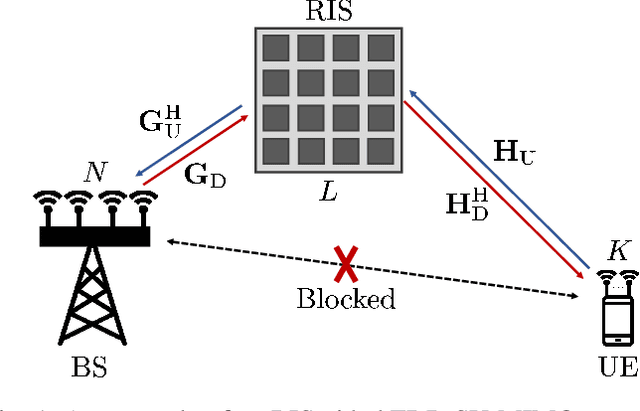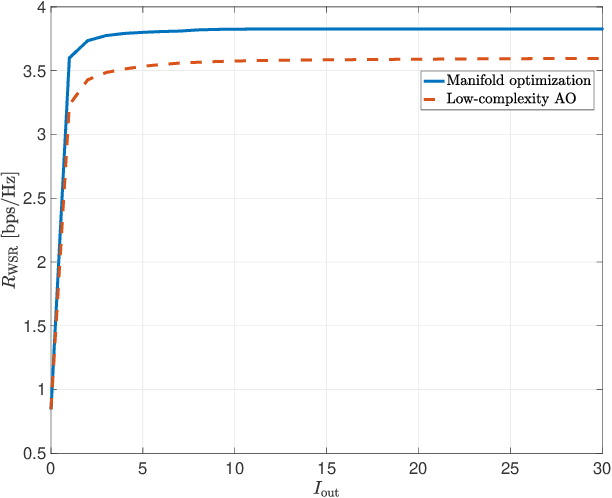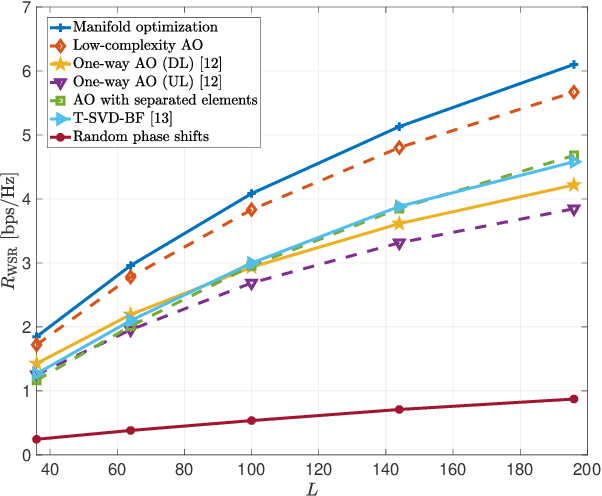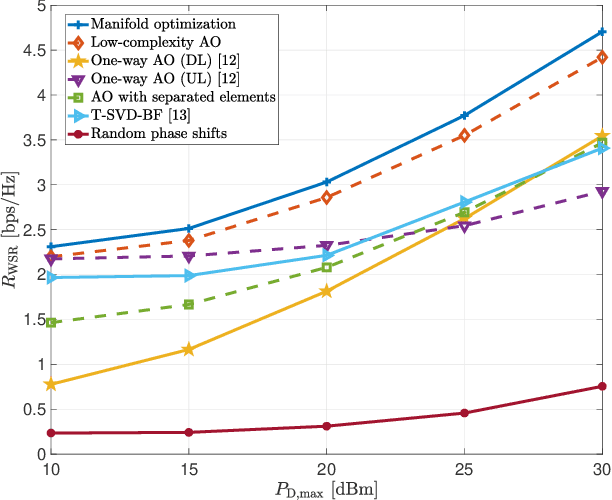Gyoseung Lee
Joint Downlink and Uplink Optimization for RIS-Aided FDD MIMO Communication Systems
Jan 21, 2024



Abstract:This paper investigates reconfigurable intelligent surface (RIS)-aided frequency division duplexing (FDD) communication systems. Since the downlink and uplink signals are simultaneously transmitted in FDD, the phase shifts at the RIS should be designed to support both transmissions. Considering a single-user multiple-input multiple-output system, we formulate a weighted sum-rate maximization problem to jointly maximize the downlink and uplink system performance. To tackle the non-convex optimization problem, we adopt an alternating optimization (AO) algorithm, in which two phase shift optimization techniques are developed to handle the unit-modulus constraints induced by the reflection coefficients at the RIS. The first technique exploits the manifold optimization-based algorithm, while the second uses a lower-complexity AO approach. Numerical results verify that the proposed techniques rapidly converge to local optima and significantly improve the overall system performance compared to existing benchmark schemes.
Channel Estimation for Reconfigurable Intelligent Surface with a few Active Elements
Feb 08, 2023Abstract:In this paper, a channel estimation technique for reconfigurable intelligent surface (RIS)-aided multi-user multiple-input single-output communication systems is proposed. By deploying a small number of active elements at the RIS, the RIS can receive and process the training signals. Through the partial channel state information (CSI) obtained from the active elements, the overall training overhead to estimate the entire channel can be dramatically reduced. To minimize the estimation complexity, the proposed technique is based on the linear combination of partial CSI, which only requires linear matrix operations. By exploiting the spatial correlation among the RIS elements, proper weights for the linear combination and normalization factors are developed. Numerical results show that the proposed technique outperforms other schemes using the active elements at the RIS in terms of the normalized mean squared error when the number of active elements is small, which is necessary to maintain the low cost and power consumption of RIS.
* Accepted to IEEE Transactions on Vehicular Technology
 Add to Chrome
Add to Chrome Add to Firefox
Add to Firefox Add to Edge
Add to Edge